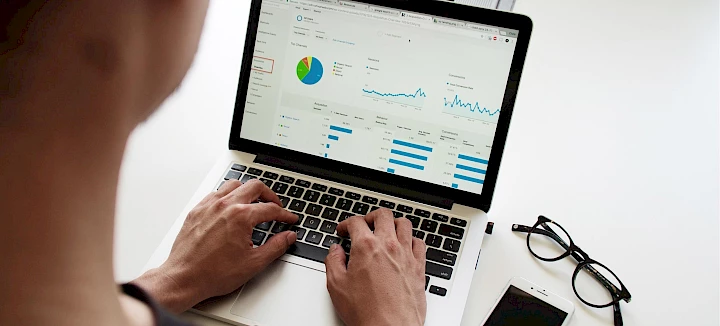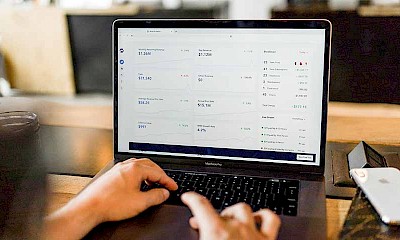
E-commerce key figures
Sustainably increase ROI in e-commerce with these KPIs
Marketers use ecommerce metrics every day to measure the performance of their sales channels and to assess how their budget can be better allocated. Each indicator discussed here can help you improve the profitability of any online store you promote.
Marketers and business owners know that access to accurate data is crucial. Knowing what you should be measuring and how often will help you make good decisions for your business. Here are the key metrics that will help you make the right decisions.
Nine key e-commerce figures
While there are hundreds of tests that you can spend a lot of time and money tracking, not all of them actually impact a company's bottom line. That's why we leave them out. Instead, we focus on key performance indicators (KPIs) that impact profitability.
These metrics allow you to get a picture of what is happening at different stages of the sales funnel. Once you have this information, you can implement specific initiatives in each area and use the data to determine if these strategies are increasing revenue.

If you're focused on driving sales, these nine ecommerce metrics will assess how well you're using your budget and your team's talents in each marketing campaign:

1. revenue by traffic source
Revenue by traffic source shows you where most of your profits are coming from. For example, you will see that you attract a significant number of customers who spend a lot through a particular channel such as Instagram. Or you'll see that you generate a high volume of sales through Facebook ads.
2. average order value
The average order value tells you the average amount spent on an order. If you maximize this, you increase your total revenue without having to spend more to acquire more customers. You can increase your average order value by promoting bundled products or services. You can also promote other offers that will increase your revenue per order.
3. shopping cart abandonment rate
If shoppers regularly add items to their cart but abandon the process at checkout, they may be having difficulty with payment methods. For some, the total may also be higher than expected. In this case, you should offer a coupon at this point. This will also increase your sales. Test different promotions that encourage your customers to complete their transactions.
4. email subscribers
Email subscribers allow you to create a database that you can use for promotions and training. You can use it to inform your customers about offers or workshops that interest them. Encourage your customers to sign up by offering them something of value in exchange for the information and letting them know what you are doing to protect their data.
5. conversion rate
This metric compares the number of sales to the number of visitors. For example, if you have 100 sales and 400 visitors, your conversion rate is 100/400 or 25%. You can then introduce actions to increase the number of visitors from your target group. For example, local SEO can help you target customers who are in your area if shipping delays are reducing your sales.

6. customer acquisition costs
Your Customer Acquisition Costs (CAC) are calculated by dividing your marketing spend for a given period by the number of new customers acquired during that period. Based on your data, you will see how you can adjust your marketing plan to achieve a better ROI.
7 Customer lifetime value
Customer Lifetime Value (CLV) is how much each customer is expected to spend with you during the time they do business with your company. To do this, you subtract the cost of acquiring them from the amount they spend with you.
If you spend very little to win them over, you could break even after just one order. Other companies, on the other hand, need several orders to reach the break-even point. Once you know this value, you can determine how many orders you need per customer and implement strategies that increase customer loyalty, repeat purchases and upselling.
You will also encounter a subset of really high-value customers. Use your data to determine how you acquired these customers and what their purchasing habits are. If you then apply strategies to ensure that you retain these customers and attract more of them, you will definitely benefit.
8. rate of returning customers
The rate of returning customers tells marketers how many customers return for another purchase within a certain period of time. You can increase this value by promoting more subscription-based products.
9. refund and return rate
This metric shows you how often customers return a product or request a refund. Tools that help customers choose the right size or color can reduce this metric in some industries. If your refund and return rate is high, your marketing team may need to adjust your message to reach customers whose needs are exactly met by your offer.
E-commerce key figures - here's what happens next
Your sales will increase if you make perfect use of your resources to track these e-commerce KPIs and take appropriate action. Your next step depends on how many of these KPIs you're already tracking and how quickly you can act on the data.
In the coming days:
- Use software to track all of the above metrics.
- Make sure your software is accurate.
- Choose at least one metric and develop a campaign to address it.
- If necessary, temporarily reallocate resources from less important areas.
- Educate your team on why the campaign is necessary and what your goal is.
- Collect data on which campaigns have impacted the metric and use it to develop even better strategies for your organization.
- Repeat the process with other metrics that impact profitability.
There is always the possibility that random events could cause a positive change in your results. So make sure your test campaign is conducted with a large enough sample size to reduce random effects and make it clear that the results are due to your actions. The effect achieved should also be quite remarkable. For example, a 0.75% increase in sales could simply be due to random fluctuations.
Conclusion on e-commerce key figures
There are several e-commerce metrics you should consider if you want to increase your sales. If you're not already tracking them and adjusting your marketing strategy based on your results, get started today and improve your profitability in the short and long term.

No success in improving your e-commerce key figures?
Whether as a Google Shopping agency or SEO agency - we know the important KPIs and how to use them to maximize your ROI and sales in the long term. Rely on cooperation with an experienced agency and use our expertise to your advantage!








